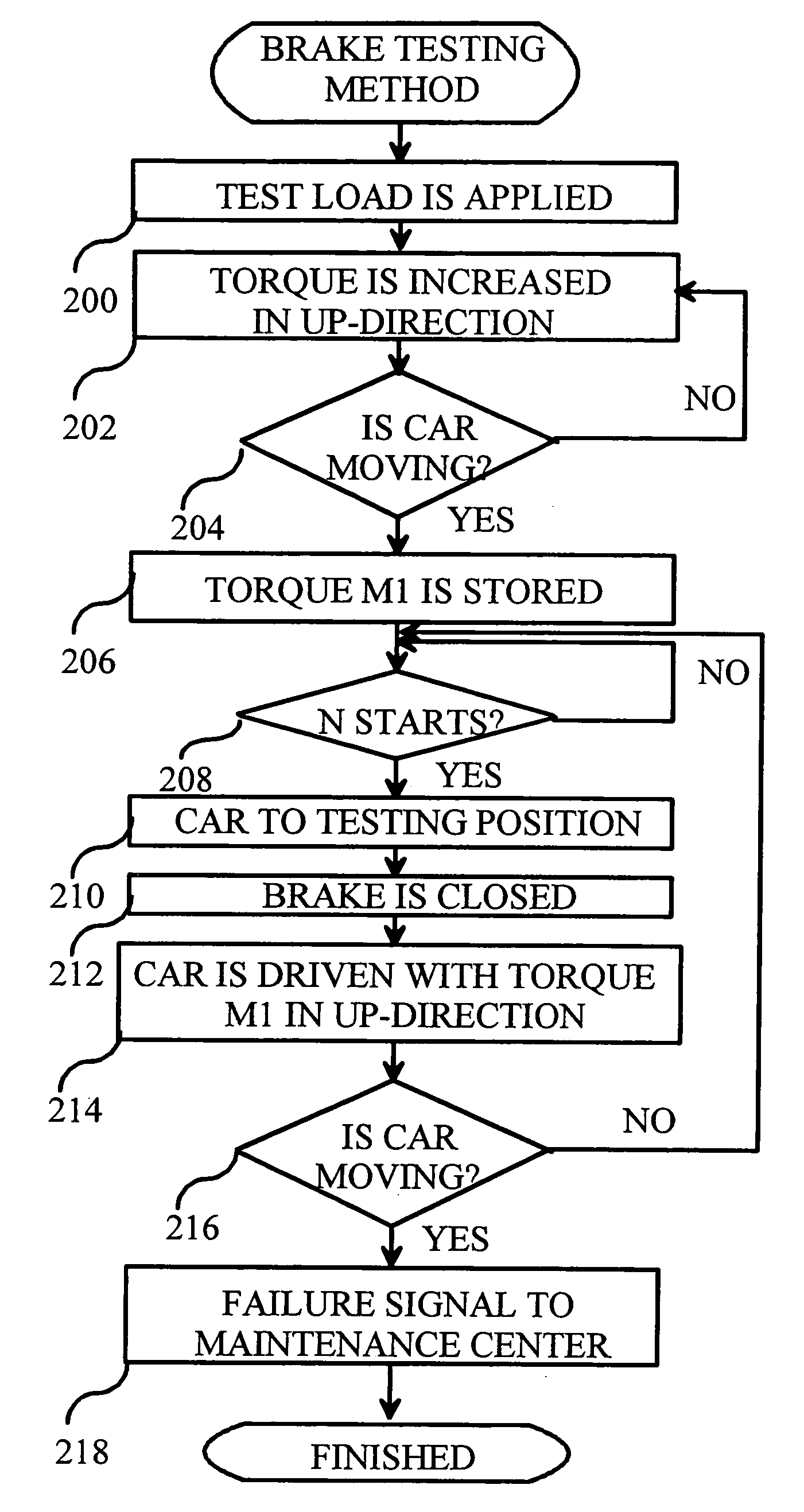Elevator arrangement
a technology for elevator cars and brake equipment, which is applied in the direction of instruments, measurement devices, force/torque/work measurement apparatus, etc. it can solve the problems of inability to detect the operation of the brakes and injuries to passengers, so as to reduce the risk of uncontrolled starting and improve safety. , the effect of saving the energy consumption of the elevator
- Summary
- Abstract
- Description
- Claims
- Application Information
AI Technical Summary
Benefits of technology
Problems solved by technology
Method used
Image
Examples
Embodiment Construction
[0022]FIG. 2 presents an example of the method of the invention for testing the brakes of an elevator machine. In an embodiment of the invention, the elevator system to be tested is as illustrated in FIG. 1.
[0023]In step 200, a predefined test load is set to apply to the drive machine of the elevator. In practice, this test load is set e.g. by loading the elevator car with test weights whose weight is sufficiently reliably known. The weight of the test load depends on the amount of overload that the elevator brakes are required to tolerate. In an embodiment of the invention, the elevator brakes are required to withstand a 125-% overload. In this case, the test load must be 75 of the nominal load of the elevator. If the elevator brakes are required to withstand an overload of P %, then the test load must be 50%+P %.
[0024]In step 202, the torque of the motor 110 is increased until it is established in step 204 that the car starts moving. In step 206, the motor's 110 torque value that ...
PUM
| Property | Measurement | Unit |
|---|---|---|
| torque | aaaaa | aaaaa |
| force | aaaaa | aaaaa |
| threshold | aaaaa | aaaaa |
Abstract
Description
Claims
Application Information
 Login to View More
Login to View More - R&D
- Intellectual Property
- Life Sciences
- Materials
- Tech Scout
- Unparalleled Data Quality
- Higher Quality Content
- 60% Fewer Hallucinations
Browse by: Latest US Patents, China's latest patents, Technical Efficacy Thesaurus, Application Domain, Technology Topic, Popular Technical Reports.
© 2025 PatSnap. All rights reserved.Legal|Privacy policy|Modern Slavery Act Transparency Statement|Sitemap|About US| Contact US: help@patsnap.com



